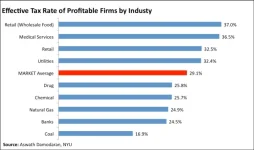They pay more than green companies which are not profitable without subsidies
Completely unsupported, and of course predictably so. Where are yer figures? What evidence do you have that green energy can't be profitable without subsidies?
"When they are well-designed, subsidies to renewables and low-carbon energy technologies can bring long-term economic and environmental benefits. However, when they are directed at fossil fuels, the costs generally outweigh the benefits." — "
World Energy Outlook 2011 Factsheet," International Energy Agency, 2011
For centuries the federal government has been in the business of providing billions in subsidies to coal companies in order to ensure company profits. Modern day subsidies to the coal industry began in 1932, when the federal government allowed companies to deduct a portion of their income to help recover initial capital investments. While many coal companies continue to reap higher profits than before, thanks to increasing coal prices, taxpayers still continue to shell out billions of dollars in federal subsidies to these successful companies.
Whether the government is subsidizing the domestic manufacturing activities or allowing coal companies to treat royalties as capital gains (meaning they benefit from paying a lower tax rate), this hugely profitable industry costs taxpayers billions. — "
Coal Industry Profits," Taxpayers for Common Sense, Jul 27, 2012
"There is a myth around subsidies, but there is no such thing as an unsubsidised unit of energy."
He [David Hochschild, a commissioner with the California Energy Commission] said the oil depletion allowance had been in place for the oil industry since 1926, and would be ongoing, despite the fact it was one of the most profitable industries in the world. He cited insurance costs for nuclear plants – met by taxpayers – "without which there would be no nuclear plants".
For natural gas, it was the drilling, or fracking, which had been made exempt from compliance with the safe drinking water act: "That is subsidy," he said. And he pointed to taxpayer funded rail networks that have helped coal.
By contrast, the large-scale wind and solar industries in the US have had to content with repeated changes to their federal support mechanisms. The tax credits have been changed seven times in a decade.
"How can you plan a wind turbine factory or project in those types of conditions," he asked.
"You put subsidies in renewable energy and costs go down" to the point where they are not needed any more. That has not happened with fossil fuels and nuclear.— "
The Myth About Renewable Energy Subsidies," Renew Economy, Feb 25, 2016
Renewables have been stymied by stop/start subsidies that almost seem designed to scare off investors, because none are permanently in the tax code the way fossil fuel subsidies are.
Uncertainty alone makes subsidies less effective. If the ITC and PTC were permanent, renewable investment would be more predictable, so supplying equipment for projects and capital cost would be less, bringing generation costs down. While some investors are able to stomach the risk of buying into renewables projects without knowing whether the tax credits will still be there when their projects reach fruition, most cannot.
Because subsidies for fossil fuels are permanent, the effect is much greater, because permanence provides a stable and predictable investment environment not given to renewables. — "
A Closer Look at Fossil and Renewable Energy Subsidies," RenewableEnergyWorld.com, Jun 10, 2015
In 2016 the U.S. will learn if renewable energy can survive without government support. The most significant tax credit for solar power will expire at the end of 2016, and the biggest one for wind already has. These federal subsidies have provided wind and solar developers with as much as $24 billion from 2008 to 2014, according to Bloomberg New Energy Finance. That’s led to a 12-fold increase in installed capacity over the past decade, helping lower costs at least 10 percent each year.
Combined, wind and solar still generate less than 5 percent of electricity in the U.S. The subsidy cuts come as both industries face stiffer competition from ultracheap coal and natural gas. — "
Say Goodbye to Solar Power Subsidies,"
Bloomberg, Nov 5, 2015



